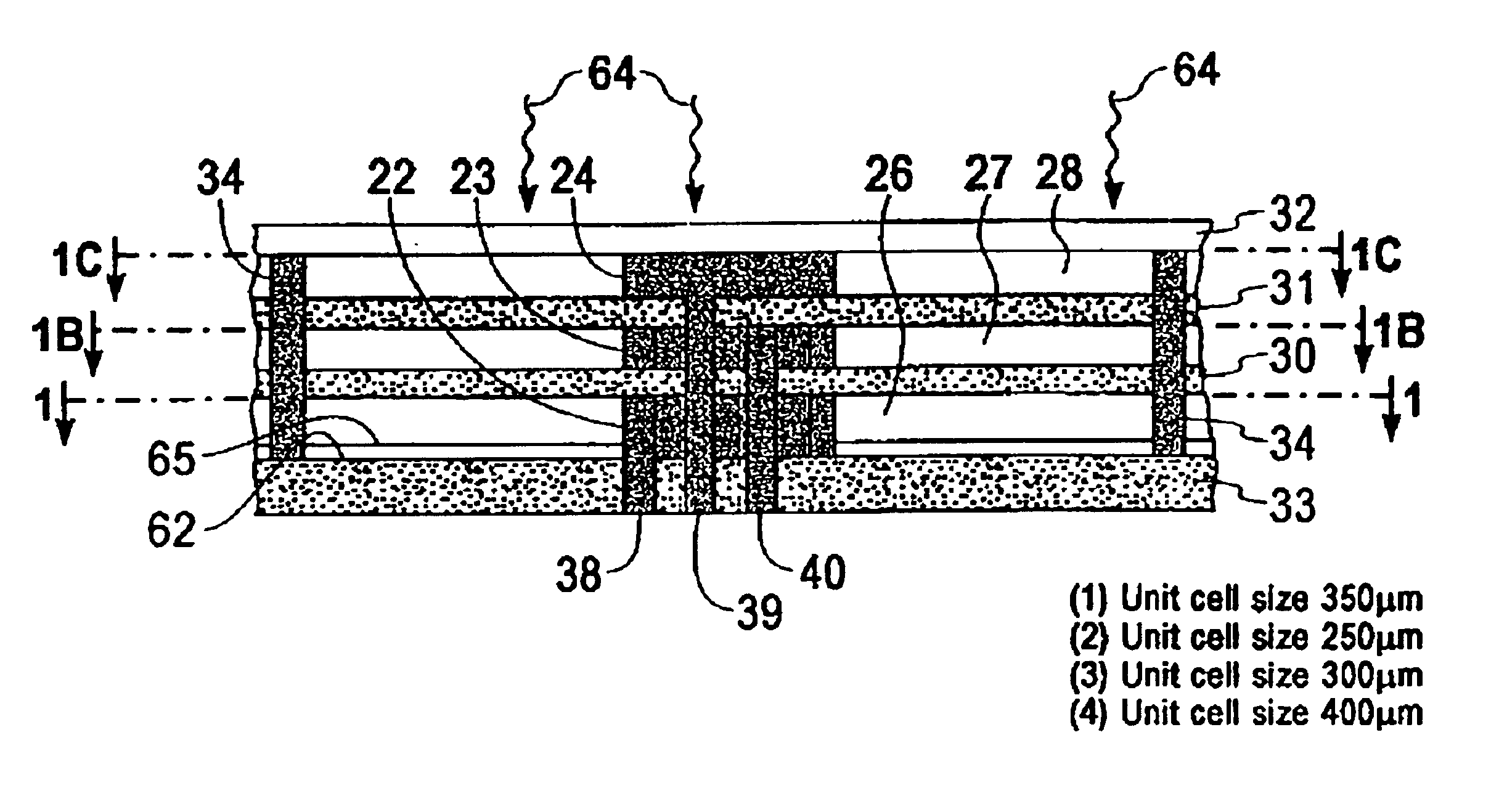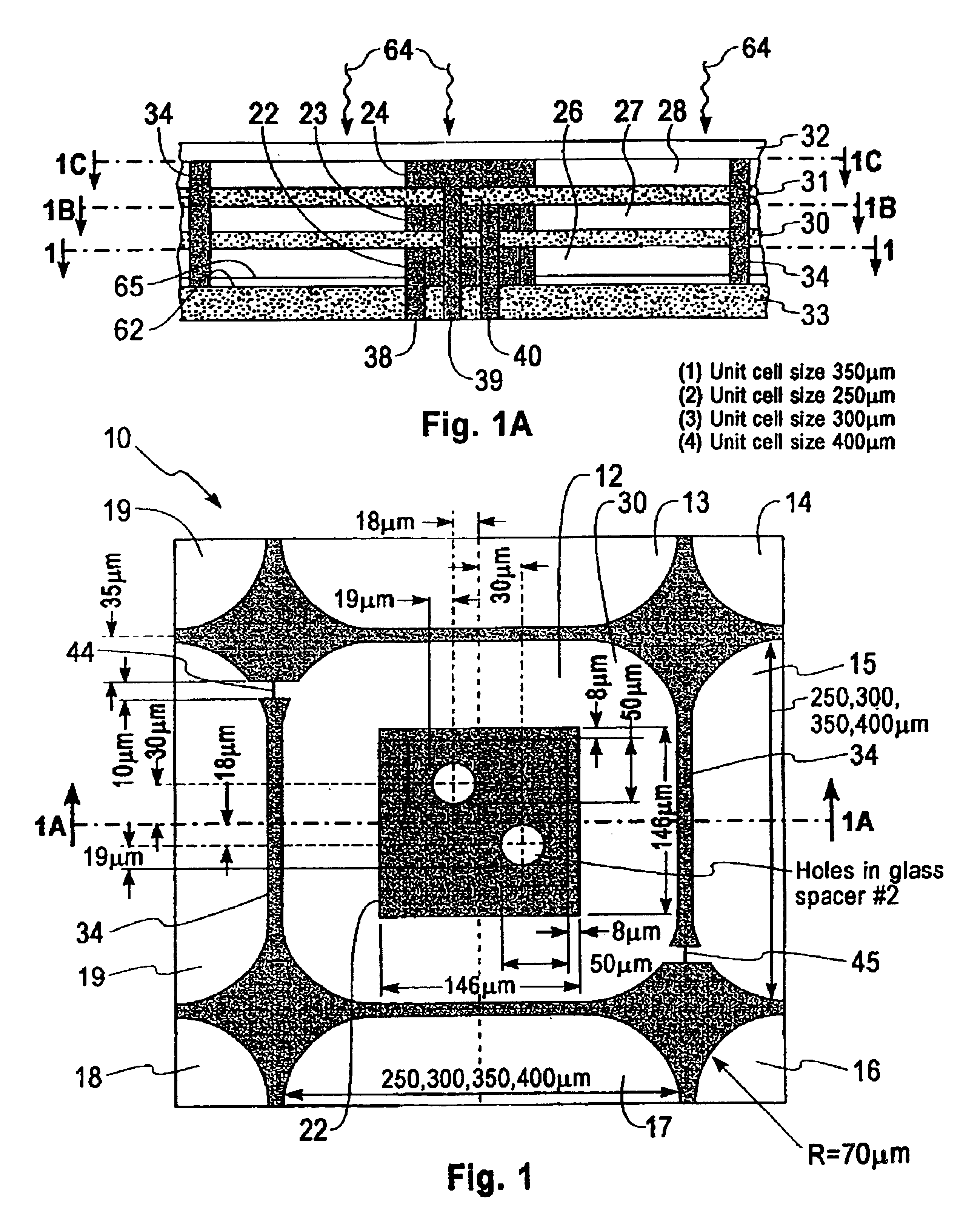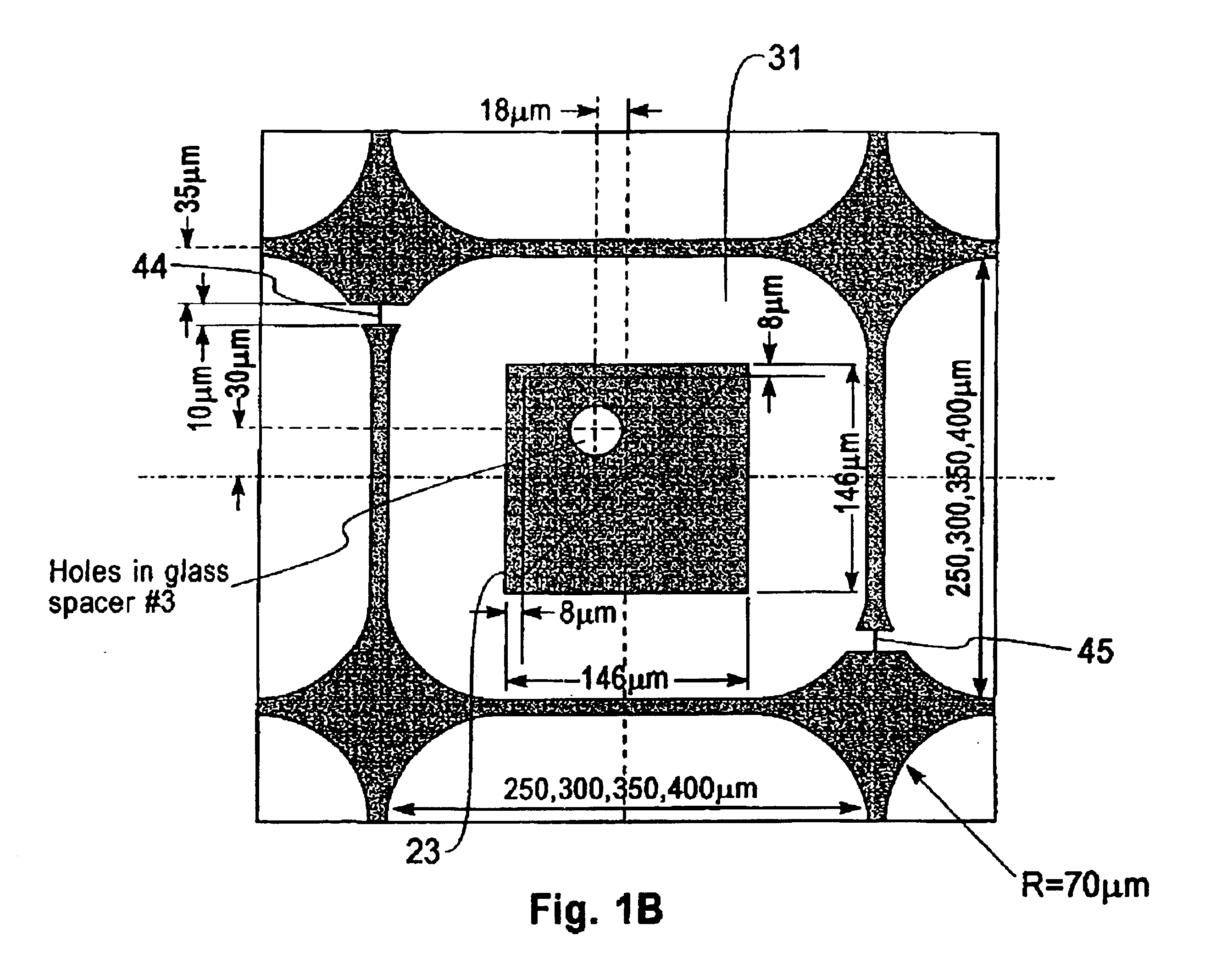Three level stacked reflective display
a liquid crystal display and reflective technology, applied in semiconductor devices, diodes, instruments, etc., can solve the problems of consuming a considerable amount of energy for back lighting and draining the battery of portable devices, and achieve the maximum reflectivity of ambient light, low cost, and easy manufacturing
- Summary
- Abstract
- Description
- Claims
- Application Information
AI Technical Summary
Benefits of technology
Problems solved by technology
Method used
Image
Examples
second embodiment
the invention is shown in FIG. 2. FIG. 2 shows a Guest-Host Liquid Crystal (LC) reflective or transmisive display 50. Reflective display 50 consists of a bottom layer 52 which carries the Thin Film Transistors (TFT's) (not shown). These transistors are fabricated by conventional means. The TFT bearing bottom layer has a dielectric insulator layer 54 on it. The dielectric insulator 54 has vias 56-58 which are filled with metal. Each metal via 56-58 is contacting a respective transistor which controls the potential on a respective level of the pixel. The metal is selected from the group of conductors such as Cu, Ni, Mo, Ag, Au, etc. The bottom layer 52 bearing the TFT's, the dielectric layer 54 and the metal filled vias 56-58 is planarized by a suitable means such as mechanical or chemical mechanical polishing (CMP).
In addition to the Guest-Host Liquid Crystal display described above, cholesteric LC reflective display and Holographic Polymer Dispersed LC (H-PDLC) reflective display ma...
PUM
| Property | Measurement | Unit |
|---|---|---|
| thick | aaaaa | aaaaa |
| temperature | aaaaa | aaaaa |
| thickness | aaaaa | aaaaa |
Abstract
Description
Claims
Application Information
 Login to View More
Login to View More - R&D
- Intellectual Property
- Life Sciences
- Materials
- Tech Scout
- Unparalleled Data Quality
- Higher Quality Content
- 60% Fewer Hallucinations
Browse by: Latest US Patents, China's latest patents, Technical Efficacy Thesaurus, Application Domain, Technology Topic, Popular Technical Reports.
© 2025 PatSnap. All rights reserved.Legal|Privacy policy|Modern Slavery Act Transparency Statement|Sitemap|About US| Contact US: help@patsnap.com



